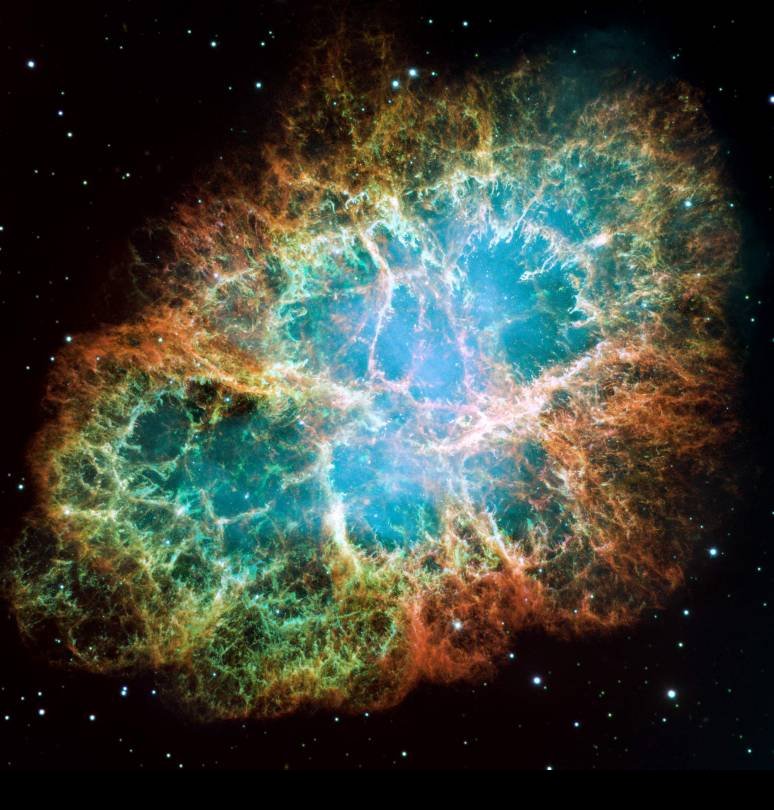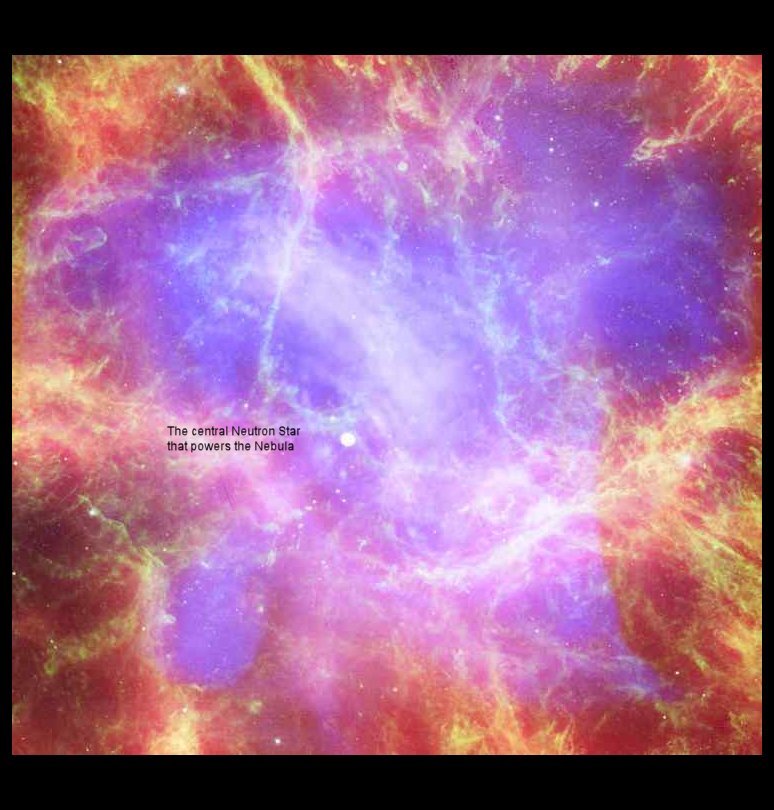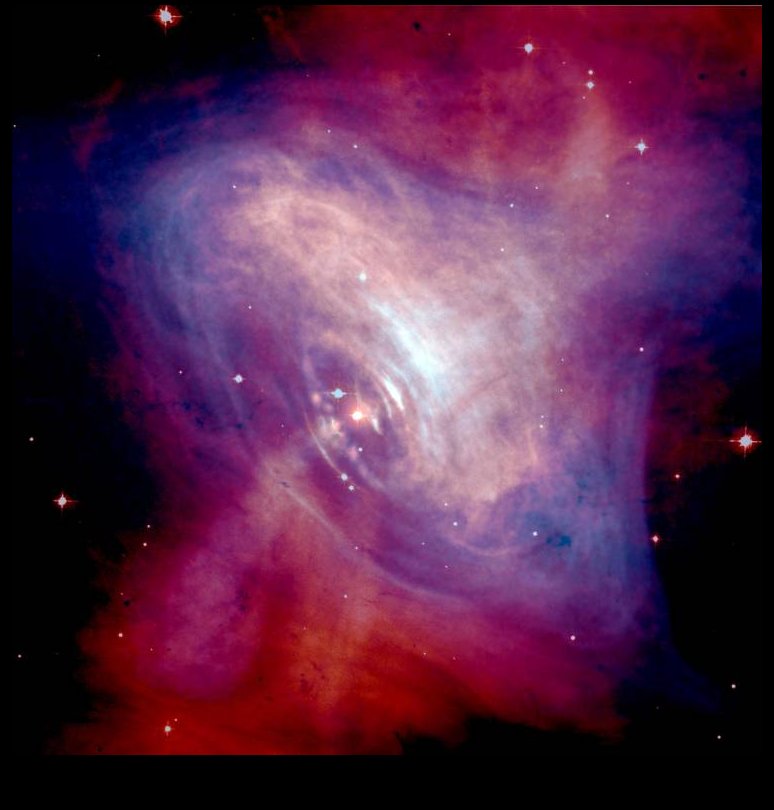The Crab Nebula
The Crab Nebula is the remnant of a supernova that occured in 1054, which was recorded by Chinese and Arab astronomers at the time. It is about 6,500 light-years away, and, after less than 1,000 years, is already about 11 ly across as it is expanding at about 1,500 km (nearly 1,000 miles) per second. The Pulsar, or rotating Neutron star, which is the driving force behind the nebula, is about 25 to 30 km (~ 15 to 19 miles) in diameter, and pulses every 33 milliseconds. While the pulses are incredibly precisely timed, like all pulsars, the Crab pulsar is slowing down in a very predictable way. In the Crab's case, this is by 38 nanoseconds per day, and is due to the large amounts of energy being carried away in the pulsar wind which is what drives the gas and dust out. The three images show the whole nebula, the central portion highlighting the neutron star, and a combined optical (hubble) & X-ray (chandra) image.





